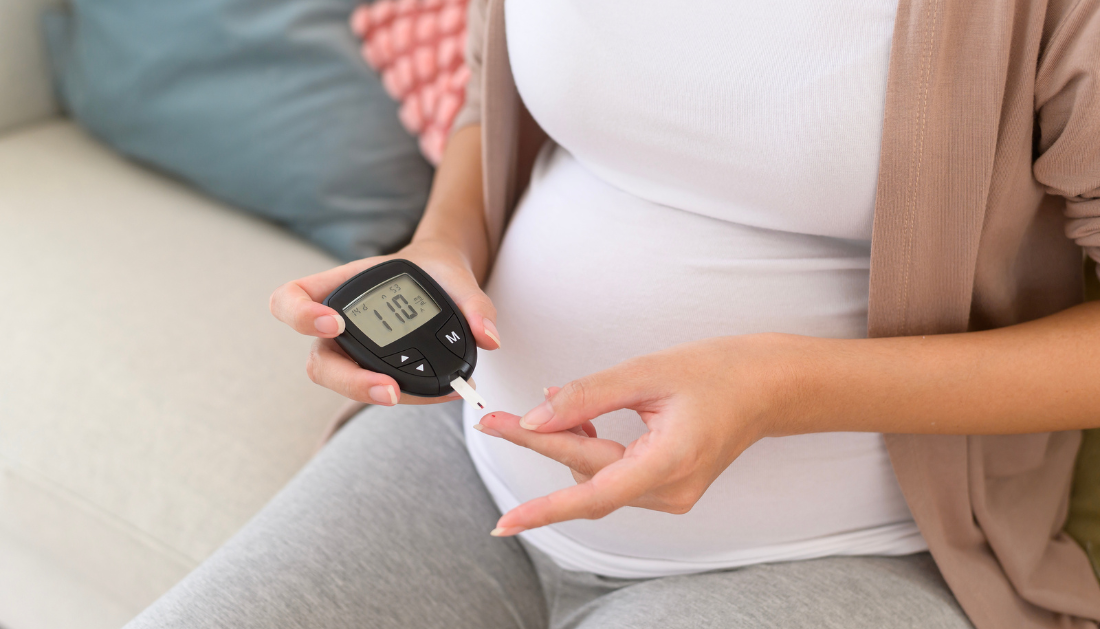

A recent study published in BMC Public Health evaluates the link between the risk of gestational diabetes mellitus (GDM) and exposure to fine particulate matter (PM2.5).
Does GDM result from PM2.5 pollution?
A frequent metabolic disease of pregnancy, gestational diabetes mellitus (GDM) has become more widespread in recent years. Studying the pathogenic variables that enhance the risk of gestational diabetes mellitus (GDM) is crucial since the disorder impacts pregnant women’s health and raises the possibility of unfavorable pregnancy outcomes, like macrosomia and newborn hypoglycemia.
Uncertainty surrounds the mechanisms by which PM2.5 and its components cause GDM. According to available data, the suppression of the insulin receptor substrate 2 gene by the polycyclic aromatic hydrocarbons (PAHs) found in PM2.5 may be a factor in insulin resistance (IR). Moreover, PM2.5 modifies the signaling pathway of CC-chemokine receptor 2, aggravating inflammation.
Nonetheless, certain research has also suggested that there is no correlation between GDM and PM2.5. Large-scale research is therefore required to clarify any possible link between PM2.5 exposure and the risk of GDM.
PM2.5 is made up of several different compounds, each of which has a different level of toxicity. These substances include sulfate, nitrate, organic matter (OM), ammonium, and black carbon (BC). According to one study, ammonia is the principal cause of asthma, while OM is the primary component responsible for the increased risk of diabetes mellitus associated with PM2.5 exposure, according to another study.
Few research have looked at the relationship between PM2.5 and its components and the risk of GDM to date.
Concerning the study
In order to document the correlations between PM2.5 and its constituents and the risk of GDM, pregnant women from Guangzhou City, Guangdong Province, China were included in the current retrospective study. GDM was diagnosed using information gathered from a nearby hospital between 2020 and 2022 using the 10th edition of the International Classification of Diseases (ICD-10) classification system.
Every study participant had a normal conception, lived in Guangzhou during her pregnancy, had complete data, was not carrying twins, and had no prior history of diabetes or hypertension.
The daily concentrations of PM2.5 and its components were obtained from the Tracking Air Pollution in China (TAP) project database. Additionally, information was gathered on potential confounding variables such blood type, age, ethnicity, marital status, and kind of profession.
Women underwent an oral glucose tolerance test between weeks 24 and 28 of pregnancy, following a minimum eight-hour fast, in order to be diagnosed with gestational diabetes mellitus (GDM).
In conclusion
While exposure to PM2.5 and its components throughout other stages of pregnancy was linked to an elevated risk of GDM, exposure to BC and sulfate during the second trimester is adversely connected with the risk of GDM. The development of public health interventions aimed at preventing GDM is significantly impacted by the discovery of these critical inflection points.
For more information: The impact of PM2.5 and its constituents on gestational diabetes mellitus: a retrospective cohort study, BMC Public Health, https://doi.org/10.1186/s12889-024-19767-1
more recommended stories
 Fat-Regulating Enzyme Offers New Target for Obesity
Fat-Regulating Enzyme Offers New Target for ObesityKey Highlights (Quick Summary) Researchers identified.
 Spatial Computing Explains How Brain Organizes Cognition
Spatial Computing Explains How Brain Organizes CognitionKey Takeaways (Quick Summary) MIT researchers.
 Gestational Diabetes Risk Identified by Blood Metabolites
Gestational Diabetes Risk Identified by Blood MetabolitesKey Takeaways (Quick Summary for Clinicians).
 Phage Therapy Study Reveals RNA-Based Infection Control
Phage Therapy Study Reveals RNA-Based Infection ControlKey Takeaways (Quick Summary) Researchers uncovered.
 Pelvic Floor Disorders: Treatable Yet Often Ignored
Pelvic Floor Disorders: Treatable Yet Often IgnoredKey Takeaways (Quick Summary) Pelvic floor.
 Urine-Based microRNA Aging Clock Predicts Biological Age
Urine-Based microRNA Aging Clock Predicts Biological AgeKey Takeaways (Quick Summary) Researchers developed.
 Circadian Control of Neutrophils in Myocardial Infarction
Circadian Control of Neutrophils in Myocardial InfarctionKey Takeaways for HCPs Neutrophil activity.
 E-Cigarette Use and Heart Attack Risk in Former Smokers
E-Cigarette Use and Heart Attack Risk in Former SmokersKey Takeaways for Clinicians and Nurses.
 36-Week Pre-eclampsia Screening May Reduce Term Risk
36-Week Pre-eclampsia Screening May Reduce Term RiskA New Preventive Strategy for Term.
 Cardiovascular Risk and Sudden Cardiac Death in Diabetes
Cardiovascular Risk and Sudden Cardiac Death in DiabetesRising Sudden Cardiac Death (SCD) Risk.

Leave a Comment